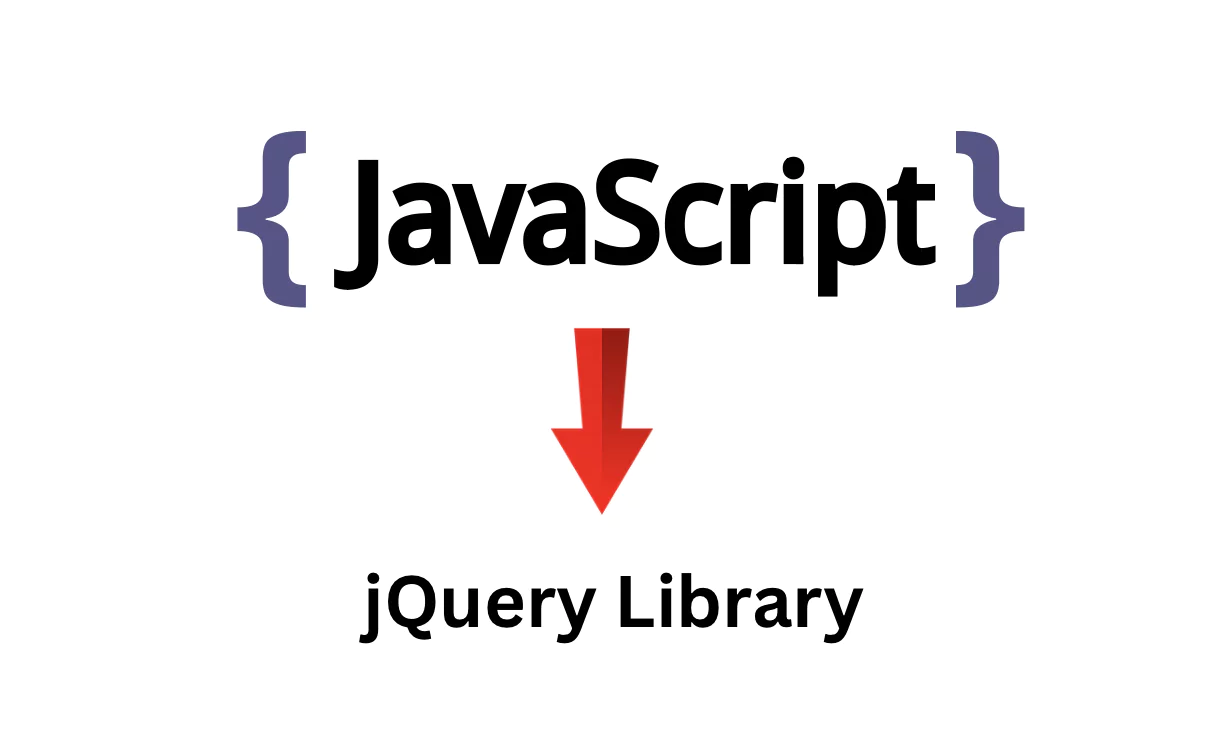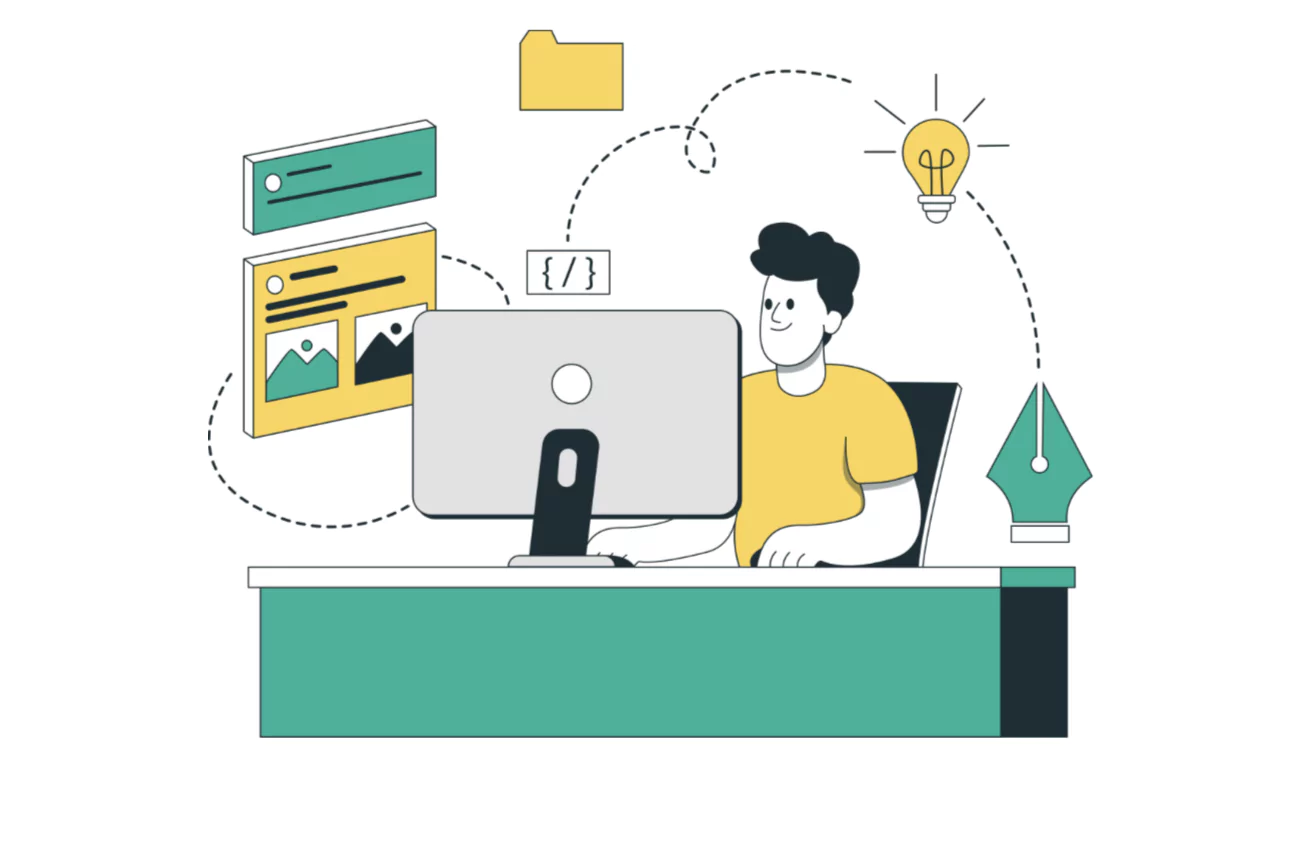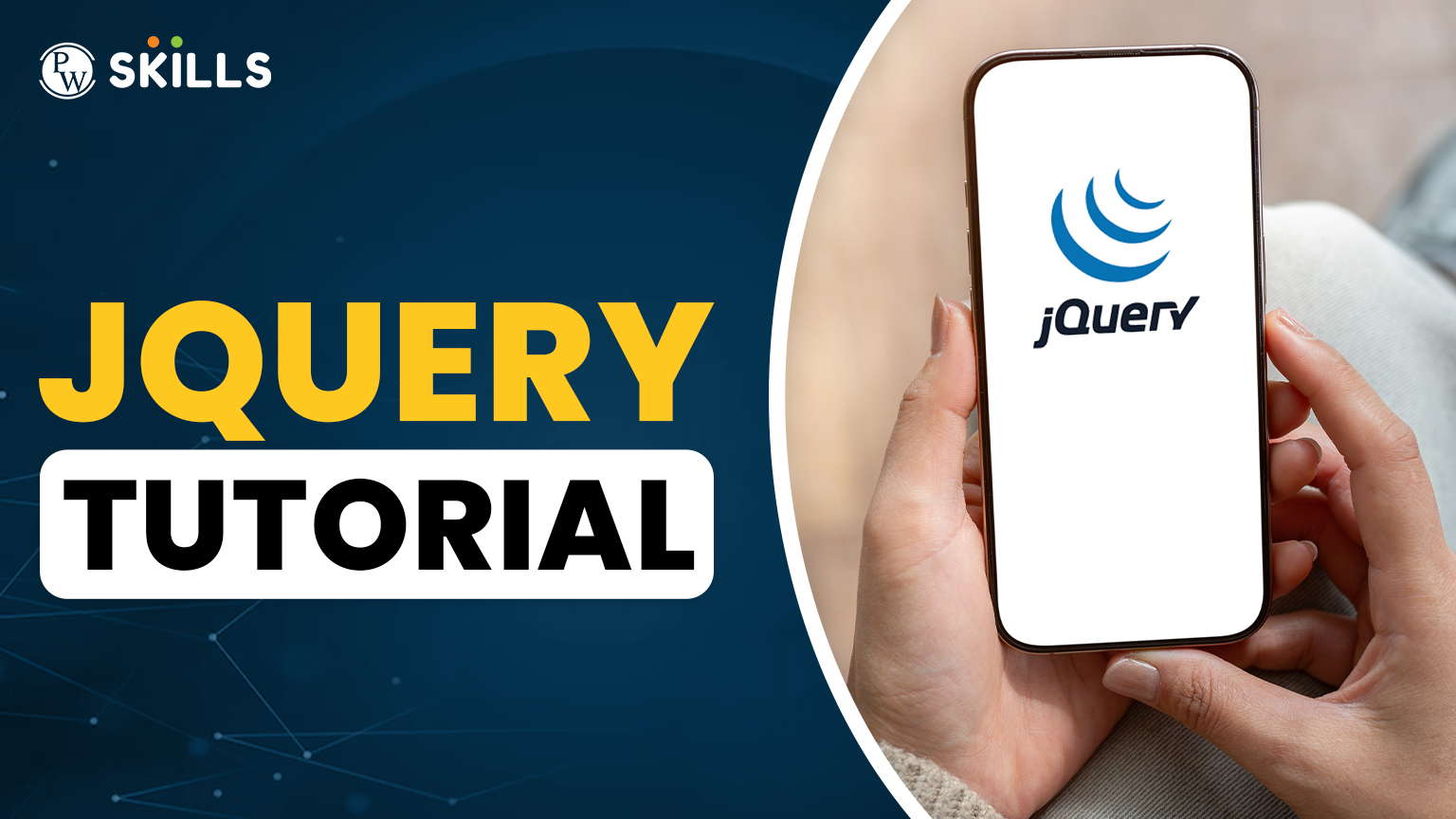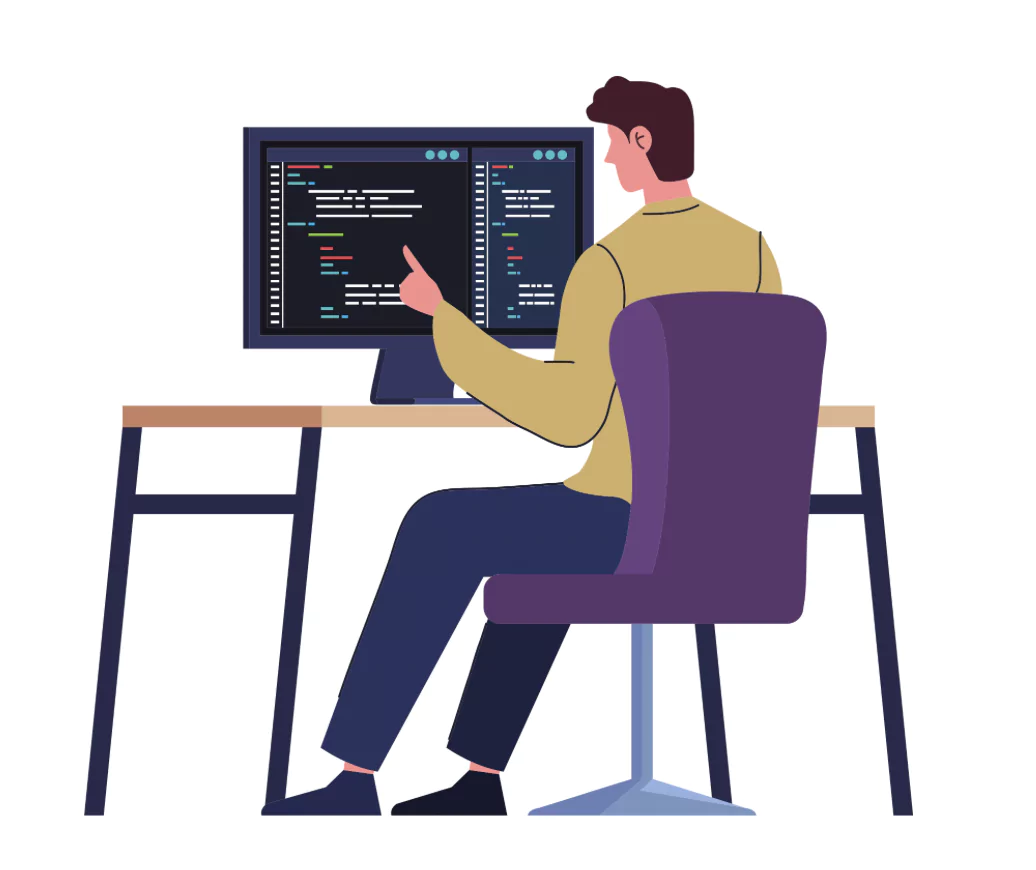jQuery tutorials are all about learning all major aspects of this Javascript library. Well you might be wondering what are the specialities of this library. jQuery is a special library of which is used to reduce the long codes of javascript and achieve “write less do more”.
The major purpose of jQuery is to make it easy for the developers to use Javascript for software development and other tasks. In this blog, we will learn more about jQuery and this jQuery tutorials will be most beneficial for beginners who are just starting with this Javascript library.
What is jQuery?
jQuery is a featured rich javascript library which simplifies various common tasks of javascript such as HTML document traversal, event handling, animation, and more which ultimately helps in faster web development. With jQuery you will need to write less code and it is also very easy to learn.

This library reduces the complex lengthy code of javascript and makes it more readable and simple. With jQuery our approach in writing the Javascript code has completely changed as it helps in saving time and resources both. jQuery tutorials for beginner is a simple article covered to help beginners become familiar with all possibilities using jQuery.
jQuery Tutorials: Key Takeaways
- jQuery is a javascript library used to optimise Javascript complex code, HTML document traversal, animation, and Ajax.
- JQuery is an open source and free javascript library mainly used for writing small and maintainable javascript code.
- JQuery was first launched in 2006 by John Resig and is one of the most popular javascript libraries currently.
The History Of jQuery Library
jQuery was released by John Resig at BarCamp New York in 2006. It provided a simpler way to handle the DOM manipulation, events and Ajax. The complex code of javascript is simplified after the introduction of jQuery. It provided easy syntax and enabled powerful animation, Ajax and event handling.
Soon after its release in 2007 jQuery gained popularity due to its simplicity and cross browser support. Major companies like Microsoft, Noika announced support for jQuery in 2008 and became one of the most popular libraries of Javascript in use. JQuery introduced mobile support to enable cross device development. Let us get familiar with the important features of jQuery library in this jQuery tutorials.
How to Implement jQuery in Web Development Projects
In this jQuery tutorials we will also learn how to implement or add jQuery in our HTML document.
- You can import jQuery in your project with CDN which you can easily paste in your HTML document <head> part or before closing the <body> tag.
| <script src=”https://code.jquery.com/jquery-3.6.0.min.js”></script> |
- You can get this CDN from the official page of jQuery on the internet. Just search for jQuery CDN and click on the first website.
- You can also download the host file locally on your system from the jQuery website. Save it using “jquery.min.js” in your project folder.
- Now when you have embedded the jQuery library in your project you can start coding inside the <script> tag. You have to use the following function code to start.
| $(document).ready() |
- Let us take an example to understand the following syntax.
| <script>
$(document).ready(function(){ // jQuery code here }); </script> |
- You have to insert the code inside the function which you want to execute. The code runs after the page is fully loaded on the server.
In these java tutorials for beginners this was just a simple overview of how to embed jQuery in your web development project. You can try yourself once by following the above steps.
jQuery Tutorials: Simple Example For Beginners

There are a variety of Javascript tasks that you can easily implement using jQuery such as animation, DOM manipulation, Ajax, and more. In Real projects jQuery is used for form validation, dynamic content loading using Ajax, responsive navigation, UI interactions, and much more. Let us take a simple example to understand this framework in this jQuery tutorials.
| <!DOCTYPE html>
<html> <head> <script src=”https://code.jquery.com/jquery-3.6.0.min.js”></script> <script> $(document).ready(function(){ $(“#btn”).click(function(){ $(“#message”).text(“Hello from jQuery!”); }); }); </script> </head> <body> <button id=”btn”>Click Me</button> <p id=”message”></p> </body> </html> |
In the above code we have embedded jQuery in the <head> section of HTML document. Now, inside the <script> tag we will mention the functionality we need for our HTML elements.
Here, we have defined the functionality of a button when we perform a click operation i,e. It will display a message “Hello from jQuery!” in the <p> element. We will delve into the deeper concept of jQuery in advanced jQuery blogs.
![]() Join Our Full Stack Development Telegram Channel
Join Our Full Stack Development Telegram Channel
![]() Join OurFull Stack Development WhatsApp Channel
Join OurFull Stack Development WhatsApp Channel
Features of jQuery Javascript Library
In this jQuery tutorials we will learn about many different features of this feature rich Javascript library.
1. Cross-Browser Compatibility
With jQuery you can easily connect via different browsers which behave in a similar way in all different browsers, such as chrome, safari, Edge, etc.
2. DOM Manipulation
jQuery is used to simplify tasks such as making changes in content, adding or removing elements, selecting elements, modifying different attributes or styles on the page. You can use easy to read selectors despite using lengthy and complex Javascript DOM methods.
3. Event Handling
With jQuery you can manage events such as hover, click, submit, on press and more easily using a single method.
4. Animation and Effects
jQuery uses methods like .hide(), .fadeIn(), .animate() and more to add smooth animations and visuals easily using simple lines of codes. This enhances the user interface of the application.
5. AJAX Support
jQuery uses AJAX to make asynchronous HTTP requests with methods such as .get(), .post(), .ajax(), and more. It makes it easy to fetch, send and update data without having to refresh the complete page multiple times.
6. Lightweight and Fast
jQuery being small in size and better optimised for performance makes it suitable for faster development, easy implementation, quick loading, and execution especially best for small projects where no complex framework is required.
7. Chaining and Clean Syntax
jQuery supports multiple methods with easy to interpret syntax which makes the code cleaner and also improves the readability and efficiency of the code.
8. Extensible with Plugins
You can easily extend the functionality of the jQuery library using plugins which are supported by this library. It makes the working of developers more effective. Learn more about these extensible plugins in advanced jQuery tutorials.
jQuery Tutorials: Frequently Used Selectors in jQuery Library
jQuery tutorials you will get familiar with all major selectors used in jQuery in web dev projects.
| jQuery Selectors | Description |
| * | It is used to select all elements |
| #id | It selects element using ID in the tag |
| .class | It selects elements using the class |
| element | It selects elements using tag name |
| element1, element2 | It can select multiple elements |
| parent > child | It is used to direct child elements |
| ancestor descendant | It is used to select all descendants |
| :first | It selects the first matched element |
| :last | It selects the last matched element |
| :even | It selects the even-indexed elements (0-based) |
| :odd | It is used to select the odd-indexed elements |
| :eq(n) | It is used to select the nth element (index starts at 0) |
| [attribute] | It selects the elements with a specific attribute |
| [attribute=value] | It selects elements with exact attribute value |
| :input | The input selector selects all form elements i,e. input, textarea, select, etc. |
| :text | It selects all <input type=”text”> elements |
| :checked | It selects the checked checkboxes or radio buttons |
| :visible | It selects all visible elements |
| :hidden | It selects all hidden elements |
jQuery Tutorials: Frequently Used Event Methods in jQuery Library
Let us find some of the frequently used event methods in the jQuery tutorials.
| Method | Description |
| .click() | This event is triggered when an element is clicked |
| .dblclick() | This event is triggered on double-click |
| .hover() | This event is triggered when mouse enters and leaves |
| .focus() | This event is triggered when input gets focus |
| .blur() | This event is triggered when input loses focus |
| .change() | This event is triggered when input/select value changes |
| .submit() | This event is triggered when a form is submitted |
| .keydown() | This event is triggered when a key is pressed down |
| .keyup() | This event is triggered when a key is released |
| .keypress() | This event is triggered while a key is being pressed |
| .mousedown() | This event is triggered when mouse button is pressed |
| .mouseup() | This event is triggered when mouse button is released |
| .mousemove() | This event is triggered when mouse moves over an element |
| .mouseenter() | This event is triggered when mouse enters element |
| .mouseleave() | This event is triggered when mouse leaves element |
| .on() | This event attaches one or more event handlers to elements |
| .off() | This event is removes an event handler |
| .unbind() | Removes event handler attached via .bind() |
jQuery Tutorials: HTML CSS Methods For Web Development
Let us know how we can easily manipulate the HTML and CSS tags using the jQuery method in this jQuery tutorials.
| Method | Description |
| .html() | This is a HTML tag which gets or sets the HTML content |
| .text() | This is an HTML tag which gets or sets the text content (no HTML tags) |
| .val() | This is used in forms or sets the value of input/select/textarea |
| .attr() | This is an attribute which gets or sets an attribute’s value |
| .removeAttr() | It removes an attribute from an element |
| .prop() | It gets or sets DOM properties (e.g., checked, disabled) |
| .css() | This is a CSS class which gets or sets CSS style properties |
| .addClass() | It is used to add one or more classes to selected elements |
| .removeClass() | It removes one or more classes |
| .toggleClass() | It adds or removes class based on current state |
| .hasClass() | It checks if an element has a specific class |
| .height() | It gets or sets the height of an element (in px) |
| .width() | It gets or sets the width of an element |
| .offset() | It gets the current position of the element relative to the document |
| .position() | This is used to get the position relative to the parent |
| .show() | It displays the hidden elements |
| .hide() | It hides the visible elements |
| .toggle() | It toggles between show() and hide() |
Also Read:
- What is Accessibility? & A Comprehensive Guide for Web Developers
- What Is a Full Stack Developer? Complete Explanation For Beginners
- What Is Frontend Development? Complete Explanation
- What is the correct term back-end back end or & backend?
Learn Full Stack Web Development with PW Skills
Grab Job oriented Full Stack Web Development Skills and discover a complete wide range of career opportunities as a frontend developer, backend developer, full stack developer, and more with Full Stack Web Development Course. Develop skills in trending technologies and frameworks with PW Skills Full Stack Web Development Course this year.
Get in-depth tutorials and interactive classes covering fundamentals, tools, and real world projects within the course. You will also get coding exercises, assignments, capstone projects, certification, doubt support and more only at pwskills.com
jQuery Tutorials for Beginners FAQs
Q1. What is jQuery?
Ans: jQuery is a featured rich javascript library which simplifies various common tasks of javascript such as HTML document traversal, event handling, animation, and more which ultimately helps in faster web development.
Q2. What is jQuery used for?
Ans: jQuery is a javascript library used to simplify the complex coding of Javascript and also allow HTML document traversal, event handling, animation, and more. With jQuery we can develop faster web development projects.
Q3. Is jQuery paid?
Ans: jQuery is an open source feature rich javascript library used for faster development and converting complex javascript code into simple readable and maintainable code.
Q4. Is jQuery easy to learn?
Ans: jQuery is a simple library used to simplify implementing javascript language. If you are familiar with javascript language then learning jQuery becomes easier for you.
Q5. How long will it take to learn jQuery?
Ans: Learning jQuery totally depends on your preparation plan and the learning materials that you are following. You can learn and master jQuery even in a month or it might also take your 3 to 6 months to completely master jQuery.


